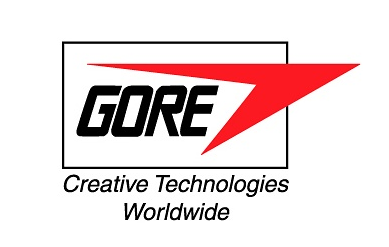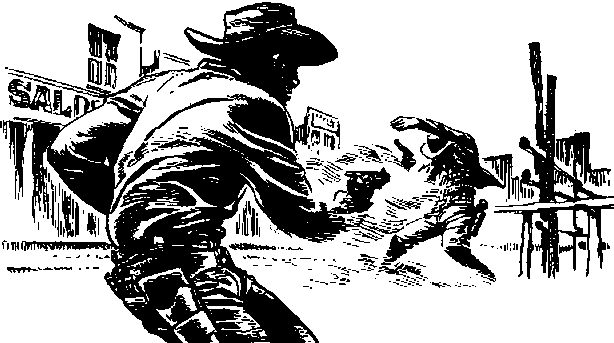Part 1:
Disaster in
Arizona
This is PART ONE of a continuing series on the case:
Bard Peripheral Vascular, Inc. et al. v. W.L. Gore & Associates, Inc.
- Shootout at the Fed. Cir. Corral
- Brief Statement of Salient Facts
- The Two Interpretations of Those Facts
- Gore's First Mistake: Wrong Vehicle for the Facts
- Gore's Second Mistake: The Jigsaw Puzzle Approach
* * * * * * * * * * * * * * * * * * * * * * * * * * * * * * * * * * * * * * * * * * * * * *
Shootout
at the Fed. Cir. Corral
Well, "disaster" and "shootout" are a bit strong, but doubling the $185M verdict to $371M for willful infringement was certainly not Gore's proudest moment, and the Fed. Cir. judges were pretty uppity with each other. Judges Gajarsa and Linn formed the majority (with Judge Gajarsa writing the majority opinion), while Judge Newman wrote a dissent. Judge Newman dissenting is not exactly news -- I think she's competing with Justice Oliver Wendell Holmes, Jr., for "The Great Dissenter" title -- but the vehemence of her dissent, and the stark contrast between the majority's and dissent's versions of the "facts," made me want to dive in and research a lot more about this case. Check out the beginning of the dissent:
The court holds today that a person who performs the requested test of a material that is provided to him for testing for a specified use, can then, when the test is successful, patent the material he was provided, for the use for which it was tested. ... My colleagues on this panel endorse and defend these errors and improprieties, and now rule that Gore [the maker who requested the test] is the willful infringer of this improperly obtained patent on Gore's [own] product and use.
- Judge Newman's dissent, p. 1.
The majority wasn't pulling their punches either -- after cavalierly dismissing Judge Newman's in-depth discussion in the first footnote ("...we cannot revisit the facts anew, nor meander through the record and select facts like our favorite jelly beans, ..."), the majority spends a good amount of time selecting their own facts from the record to support their opinion (upholding the district court's holdings), all the while getting their own digs into Judge Newman.
Once I got into the details of this incredibly complex case, I saw that Gore made the same tactical errors that most patent litigators make (in my opinion), and this led directly to a crushing defeat, rather than merely a loss (i.e., Gore was nailed with willful infringement, the whole nine yards). This article is to discuss those errors, but the reader should not mistake this as a criticism of the attorneys in this particular case, but rather a criticism of how most attorneys approach patent litigations.
Brief Statement
of Salient Facts
Gore, the defendant below, manufactures a material called highly-expanded polytetrafluoroethylene ("ePTFE"), which in some forms is known as "Gore-Tex" (and if I were defense counsel, I would have called it "Gore-Tex" all through trial), whose microstructure consists of solid nodes connected by fibrils. Gore gave Goldfarb some Gore-Tex to test as stents ("vascular grafts") in animals. Goldfarb found that one of the 21 stents made from the Gore-Tex was "successful," from which he determined that the average distance between nodes in the material had to be in a specific range to work properly. Goldfarb applied for a patent claiming ePTFE tubes with such a range of internodal distances as his invention, which, after a long, complicated, and tumultous 30 year history, finally issued as a patent and was assigned to Bard, who, along with Goldfarb, sued Gore for infringement.
I would have called it "Gore-Tex" all through trial), whose microstructure consists of solid nodes connected by fibrils. Gore gave Goldfarb some Gore-Tex to test as stents ("vascular grafts") in animals. Goldfarb found that one of the 21 stents made from the Gore-Tex was "successful," from which he determined that the average distance between nodes in the material had to be in a specific range to work properly. Goldfarb applied for a patent claiming ePTFE tubes with such a range of internodal distances as his invention, which, after a long, complicated, and tumultous 30 year history, finally issued as a patent and was assigned to Bard, who, along with Goldfarb, sued Gore for infringement.
The Two Interpretations
of Those Facts
For Judge Newman, Gore gave its own proprietary material to Goldfarb to test for a specific use, Goldfarb tested that material for that specific use, and then applied for a patent on the results of that test, even though those results were nothing more than "useful observations" of the inherent properties of the material Gore asked to be tested for that specific use (see, e.g., pp. 19-20, dissent). For the majority, Gore gave material to Goldfarb to test as a stent in animals, but Gore gave no guidance or direction (or even a communication) concerning what would make that material good or bad for such a use, and Goldfarb determined on his own that a specific range of average distances between the nodes making up the material was best, and Goldfarb properly sought (and received) a patent on a stent comprising an ePTFE tube with internodal distances in that specific range.
Gore's First Error:
The Wrong Vehicle for the Facts
Both descriptions are broadly accurate, but focus on different facts. The different foci demonstrate Gore's first tactical error: asserting joint inventorship at trial.  Because joint inventorship is necessarily JOINT, Bard could just hammer away at the fact that Goldfarb and the putative joint inventor at Gore (a guy named Cooper whom I will call "Gore" anyway) never worked together, never collaborated, never even communicated on the subject at the relevant time of "invention" (thus, the majority opinion's legally correct focus on the extent of the communication between Gore and Goldfarb).
Because joint inventorship is necessarily JOINT, Bard could just hammer away at the fact that Goldfarb and the putative joint inventor at Gore (a guy named Cooper whom I will call "Gore" anyway) never worked together, never collaborated, never even communicated on the subject at the relevant time of "invention" (thus, the majority opinion's legally correct focus on the extent of the communication between Gore and Goldfarb).
Moreover, joint inventorship makes defense counsel argue that Gore shared in "conceiving the invention" while at the same time (or at least at the same trial) asserting there was no invention (i.e., it was invalid for anticipation and/or obviousness). No human being can listen to both sides endlessly discuss the minutiae of who knew what about the "invention" without it affecting his or her assessment of whether there was an invention at all. Listening to days on end of testimony (elicited by both sides) concerning who knew, and did (or did not) record, a specific range of internodal distances, will practically force the listener to conclude that the specific range of internodal distances at the heart of the "invention" was very important (perhaps even novel and, dare I say, non-obvious).
A crucial duty of the trial attorney is to determine how to frame the facts for presentation to the judge and jury. Joint inventorship was perhaps the worst framework in which to present Gore's facts at trial. First, joint joint joint JOINT!!!--of course the other side is going to hammer away at the lack of collaboration--Gore handed its opponent the means by which to distract the jury away from Gore's strong points. Second, and far worse, Gore -- GORE, not the other side -- Gore chose a defense that will rigorously focus the judge and jury's attention on the details and novelty of the "invention."
So what should Gore have done? Well, Judge Newman masterfully summed up the perfect defense in one sentence at the start of her dissent (she definitely has the chops of a great litigator), but let me repeat it: Gore asked Goldfarb to test Gore-Tex as a material for vascular grafts (because it has unique and amazing qualities, including "porosity"), Goldfarb performed the requested tests and found that Gore was right, so Goldfarb, a doctor who had no clue how to manufacture Gore-Tex (ePTFE), applied for a patent on using Gore-Tex for a vascular graft--the bastard patented the results of the testing Gore asked him to perform!
In stark contrast with joint inventorship, the storyline above fits perfectly into and further supports anticipation and/or obviousness arguments.
The "porosity" I mentioned above did become an issue at the district court level, but clearly that was bungled as well. [tidgenote: more on "porosity" in an upcoming article] And, for those who might be wondering, Gore did file a patent application on using Gore-Tex as a vascular graft and, in fact, there was an interference declared between the Gore and Goldfarb applications. Indeed, that 20-year interference combined with the multitude of lawsuits between the different witnesses and past and/or present parties to this lawsuit make it almost impossible to remember what team the different witnesses are playing on ... or, more exactly, to keep straight what team they were playing on at the time of their "old" testimony from other cases vs. their live testimony in the instant case.
Do I know Gore didn't argue "the Newman defense?" No, because I can't download the trial transcripts on PACER. But I don't need a weatherman to know which way the wind blows. Even if this was mentioned as a subtheme, it was weakened, if not completely discredited, by Gore's joint inventorship argument, and further lost by Gore's deliberately wading into the morass of mind-numbing details concerning the 30 year history of this patent [tidgenote: we'll discuss the complexity problem in a later article]. In short, for the Newman defense to have worked for Gore, it would have to be the story told to judge and jury, not just one of the 1,000 theories and facts spewed in hundreds of briefs and 2 or 3 weeks of testimony. The best strategy is to stick to one story that'll stick to the judge&jury, not to throw every legal theory and the kitchen sink at judge and jury.
Gore's Second Error:
The Jigsaw Puzzle Approach
Gore did make anticipation/obviousness arguments (after/while eliciting testimony for their joint inventorship argument which highlighted that the heart of the putative invention, the range of internodal distances, was unique and rare). Obviousness arguments are a big bugbear with me, because I believe the standard method for presenting is by way of The Jigsaw Puzzle Approach. The Jigsaw Puzzle Approach is when to present the jury with different pieces of prior art, which are pieced together, most likely "guided" by an expert, to create the invention. Hence, the "jigsaw puzzle." Unfortunately, claim charts foster this type of thinking about obviousness.
Obviousness arguments are a big bugbear with me, because I believe the standard method for presenting is by way of The Jigsaw Puzzle Approach. The Jigsaw Puzzle Approach is when to present the jury with different pieces of prior art, which are pieced together, most likely "guided" by an expert, to create the invention. Hence, the "jigsaw puzzle." Unfortunately, claim charts foster this type of thinking about obviousness.
Prior art is history, and the best way to teach history is through stories. A story is the most powerful vehicle for explaining almost anything to a group of human beings. Not charts, not figures, not Powerpoint slides, not computer animation--STORIES. A story is not a series of facts, although a list of events is often what lawyers present as the story in a patent litigation. The power of a good story is quite simple--without anything more, it can become the organizing principle by which the judge&jury views the facts and, when that happens, you're halfway to winning.
There is always a story behind why something is an invention, as well as a story behind why something is not an invention. Usually, the two stories don't directly contradict each other, but are instead inconsistent, and almost always the opposing stories will focus on different periods of time.
In this case, Bard/Goldfarb's optimal story is Goldfarb's testing of the material: Goldfarb was the heroic doctor trying to understand (and save) the living body, experimenting with different materials in order to determine how to graft inanimate material into living flesh in such a way that the living flesh literally becomes one with the inert material. Through his efforts, his knowledge, his understanding of physiology, he realized that, in regards to the ePTFE he was researching, the answer--the crucial feature--is the internodal distance of the ePTFE: this is the previously unrecognized factor that determines whether an inanimate graft forced into a living blood vessel will become one with the flesh of the walls of the vein/artery rather than killing the patient. Know someone with a stent? Dr. Goldfarb probably saved their life.
If you're Gore, and you've (appropriately) decided your best attack is anticipation/obviousness, your optimal story would not focus on the time period of Goldfarb's experiments, but rather the whole time period leading up to those experiments. Who were the pioneers of vascular grafts? Often patent litigators arguing obviousness only focus on "pioneers" if those pioneers wrote some of the specific prior art being asserted against the patent. But if you truly want to belittle someone's achievement, present the history of that field, present the giants who really did invent things, and, without ever saying so, you force a perspective on events that makes your enemy's achievement appear trivial.
And even more importantly (in terms of focussing on the time period before Goldfarb's experiments), what exactly was known about vascular grafts? [tidgenote: see part two]
The worst strategy for Gore would be to focus on the period of Goldfarb's experimenting, what was known by specific people at that exact time period, what was specifically written down about it, and where, ... specifics, specifics, specifics--doing so just helps Bard/Goldfarb keep raising higher and higher and higher the importance of that specific range of internodal distances. But that's exactly what Gore did. Gore focussed on pieces of prior art (that were also before the PTO during the prosecution and interference) which were written at roughly the same time by other doctors (Volder, Matsumoto) who, like Goldfarb, were playing around with ePFTE provided by Gore. With so many people doing the same thing, but only Goldfarb finding the magic internodal range once again makes it sound like an invention.
* * * * * * * * * * * * * * * * * * * * * * * * * * * * * * * * * * * * * * * * * * * * * *

